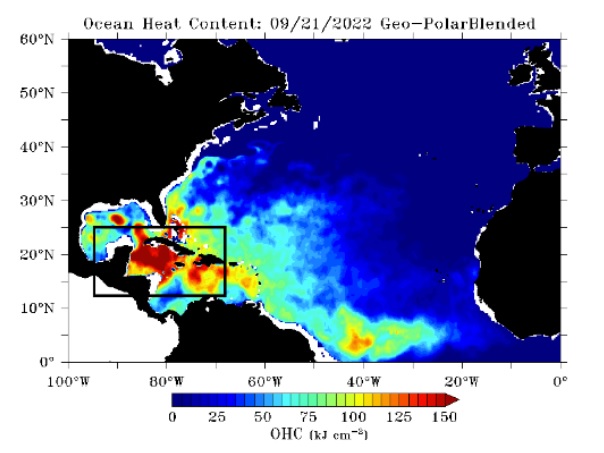After a sleepy start to the hurricane season, storm watchers are eyeing a disturbance east of the Windward Islands as the first potentially serious threat to the Yucatan Peninsula and the state of Florida — although it’s too soon to tell for sure.
Computer models are in rare agreement that the system could strengthen into the next tropical storm of the season, which would be called Hermine, and head west into the Caribbean sea over the next few days. By Tuesday, most models put the could-be storm directly south of Cuba.
From there, the spray of potential paths stretches from Belize to the Bahamas, including all of Florida.
Despite the images of the models circulating on social media — some with a black line running directly over Florida — Acting Director of the National Hurricane Center Jamie Rhome warned it was too early to count on impacts.
“There’s a lot of speculation out there about the potential impacts to the U.S.,” he said in a broadcast Wednesday morning. “That is way too premature to go that far.”

As of Wednesday morning, the tropical wave was east of Trinidad and Tobago and wasn’t quite showing a strong enough circulation or defined center to earn it a formal designation as a tropical depression or tropical storm from the hurricane center. Without a clearly defined center, it’s harder for computer models to accurately predict the track of a storm.
“Until a low-level circulation forms, we won’t be able to say much with certainty about the impacts to the U.S.,” Rhome said.
The hurricane center’s 2 p.m. advisory gave the disturbance a 70% chance of developing in the next two days and a 90% chance of developing this week, unchanged from the morning update. Hurricane hunters are scheduled to investigate the system Wednesday evening.
What has meteorologists concerned, however, is the patch of super warm water this potential disturbance could cross on its way to Cuba if the models are correct. The slower storm season has left those waters untouched by cooling high winds for months, so the above-average sea surface temperatures are fuel for a more powerful storm.
As a tropical wave gathers strength in the southern Caribbean, oceanic heat content along its path is tremendously high.
— Atmospheric G2 (@Atmospheric_G2) September 21, 2022
If this system develops this weekend, the U.S. is absolutely in play later next week or next weekend.
All interests from TX to FL should monitor. #Tropics pic.twitter.com/4TwTFm8rDW
That hot water, coupled with low wind shear, could be a recipe for intensification.
“In general, this is about as good of an environment as you can get in the Atlantic basin,” tweeted Eric Webb, a meteorologist with the National Hurricane Center.


